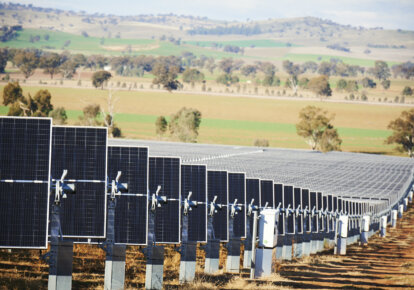On November 13 (2018), our specialists ran through the rewards businesses can receive from getting involved in demand response over summer.
Over summer, Australians will use more energy, whether this is to cool their homes or for businesses, to keep operations running smoothly. For some industries, summer is also their peak production season. But there is a silver lining. As the warmer months roll in, there are increased opportunities for businesses to participate in demand response and be rewarded for when and how they use power.
Last week, we hosted a webinar to discuss demand response and what it means for Australian businesses as we head into the warmer seasons.
For those unfamiliar with the term, demand response is simply changing your power consumption in line with what’s available in the energy market. In fact, it’s not too far off Uber’s surge pricing, where energy users pay a higher price when demand is high and supply is low, and vice versa.
Why do businesses need demand response?
Demand response boasts benefits for both businesses and the energy grid as a whole. From pricing to reliability, businesses with active demand response will reap the benefits, especially during summer.
Its benefits are twofold: it can reduce network demand charges – one of the heftiest components of an energy bill – and lower overall energy costs, while also positively affecting network reliability. In addition to this, demand response’s benefits far outweigh the effort and the costs associated with participating.
For businesses that are also participating in demand response programs, such as ARENA and AEMO’s joint demand response pilot, there can also be financial incentives which are paid to energy users that participate.
Who can use demand response?
Every business in the NEM, no matter the size or location, can realise the benefits of demand response.
To find out if your business is able to participate in demand response and how it can be best integrated into your energy strategy, watch the webinar here or get in touch with a member of the team.
If you have more questions, check out our webinar Q&A below.
Webinar Q&A
How will battery storage play a role in demand response?
Batteries are an incredibly effective way to participate in demand response as they can be utilised in the same way that curtailment of load or onsite generation can be used. A battery can temporarily provide power to a site and reduce its demand on the market incredibly quickly, meaning that businesses can more flexibly respond.
And what about generators?
Like batteries, onsite generation can allow energy users to participate in demand response without actively reducing how much power is supplied to their sites. Instead, power is simply supplied from a different source. However, until the price for batteries come down, generators come in at a much lower cost.
Can businesses in Queensland participate?
Absolutely. While Queensland doesn’t have an RERT program, it does have a wholesale energy market that allows users to achieve the same low price outcomes.
What happens if I don’t respond?
There’s no penalty for those that don’t participate in demand response but this means you are missing out on potential savings. In worst case scenarios we all experience a blackout.
Will my power be cut off in an event?
Certainly not. Unless, the demand on the grid was so extreme that it caused a rolling blackout.
Does Flow Power service smaller businesses?
We service business of all sizes, all the way down to 100 megawatt hours, which is a relatively small business.
Is there a cost to participate?
Not directly, unless your business needs to look at implementing changes to your sites, such as installing new technology. The good news is that return on investment for demand response is generally very high, especially for businesses involved in a program.
Is there any benefit for a site that is operated on a seasonal basis? For example a pump station used to mimic environmental flooding.
Definitely. In fact, seasonal loads often see some of the best benefits and a number of Flow Power’s customers fall into this category.
Does Flow Power have existing clients with cold-store or refrigeration sites that are happy to drop refrigeration load typical demand response periods? Or are these periods too long and risk impacting product temperatures?
Yes we do! From our experience with customers with refrigeration sites, this generally isn’t an issue. Refrigeration sites can usually tolerate one to two hour periods, sometimes longer, without seeing a detrimental impact.
Having prior knowledge in these situations can be an enormous asset, as refrigeration use can be optimised to align with certain times of the day or to undertake pre cooling.
Any questions? We’re here to help.
If you’re interested in learning more about demand response, our friendly team are always available for a chat.
If you’re an existing Flow Power customer, please do not hesitate to reach out to your account manager.
If you’re not a Flow Power customer contact our friendly team today:
? 1300 08 06 08 (within business hours)
?️ Live chat message (within business hours via the chat button at the bottom of your screen)
Alternatively, you can submit your questions through our website contact form here.














